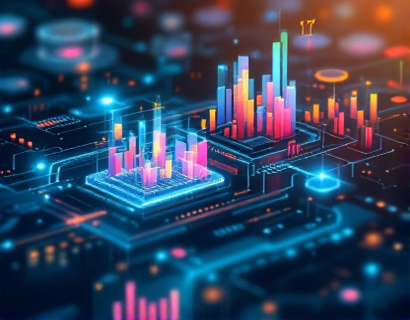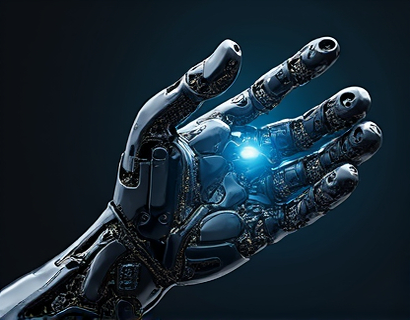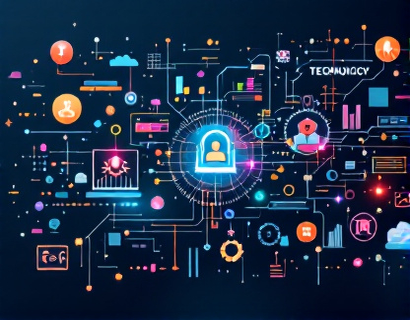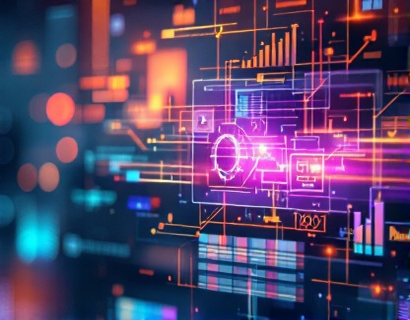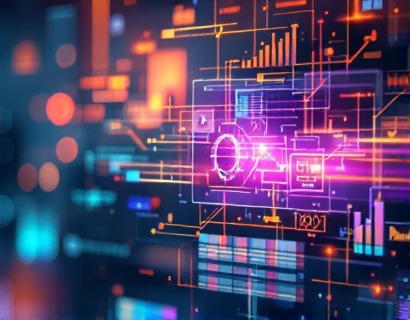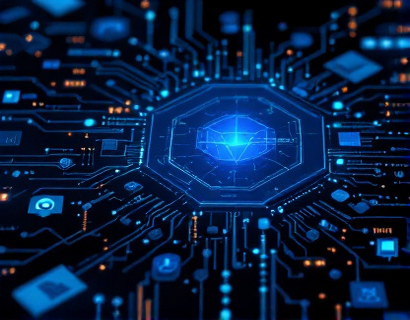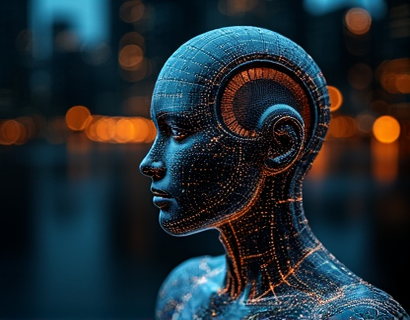Crypto and AI Revolution: Transforming Digital Experiences with Next-Gen Solutions
The intersection of cryptocurrency and artificial intelligence (AI) is giving rise to a new era of digital experiences. This convergence is not just a technological curiosity but a transformative force that is redefining how we interact with apps and services. As we delve into the latest advancements in tech-driven applications, it becomes clear that the future of digital experiences is being shaped by the synergy between blockchain technology and AI.
Understanding the Convergence
The fusion of cryptocurrency and AI is creating a powerful ecosystem where data integrity, security, and efficiency are paramount. Cryptocurrency provides a decentralized and transparent ledger for transactions, while AI enhances the processing and analysis of vast amounts of data. This combination is leading to the development of next-generation digital solutions that are more secure, efficient, and user-friendly.
Enhanced Security Through Blockchain
One of the most significant benefits of integrating cryptocurrency into AI-driven applications is enhanced security. Blockchain technology ensures that data is immutable and tamper-proof, which is crucial for applications handling sensitive information. For instance, in financial services, AI algorithms can analyze transaction patterns to detect fraud, while blockchain ensures that all transactions are recorded securely and transparently. This dual-layer security approach minimizes the risk of data breaches and unauthorized access.
AI-Driven Optimization of Cryptocurrency Networks
AI is also playing a pivotal role in optimizing cryptocurrency networks. Machine learning algorithms can predict network congestion, optimize mining operations, and improve transaction processing speeds. For example, AI can dynamically adjust the difficulty of mining tasks based on real-time network conditions, ensuring that the network remains efficient and responsive. This optimization not only enhances the performance of cryptocurrency networks but also reduces energy consumption, addressing one of the major criticisms of blockchain technology.
Personalized User Experiences
The integration of AI in cryptocurrency applications is enabling highly personalized user experiences. AI algorithms can analyze user behavior and preferences to provide tailored recommendations and services. In the context of digital wallets, AI can suggest optimal investment strategies based on market trends and user risk tolerance. This level of personalization not only enhances user satisfaction but also increases the adoption of cryptocurrency-based services.
Smart Contracts and Automated Processes
Smart contracts, powered by blockchain, are revolutionizing the way agreements are executed and managed. When combined with AI, these contracts can become even more sophisticated. AI can automate the execution of smart contracts based on predefined conditions, reducing the need for intermediaries and lowering transaction costs. For instance, in supply chain management, AI can monitor and verify each step of the process, ensuring that smart contracts are triggered automatically when conditions are met.
Decentralized Finance (DeFi) and AI
The DeFi space is one of the most exciting areas where cryptocurrency and AI are converging. DeFi platforms leverage blockchain to offer traditional financial services like lending, borrowing, and trading without central authorities. AI enhances these platforms by providing advanced risk assessment tools, fraud detection systems, and predictive analytics. These tools help users make informed decisions and reduce the risks associated with decentralized finance. For example, AI can analyze market data to predict price movements, helping users optimize their trading strategies.
Tokenization and AI-Enhanced Asset Management
Tokenization, the process of converting assets into digital tokens on a blockchain, is another area where AI is making a significant impact. AI can analyze vast amounts of data to identify valuable assets for tokenization, from real estate to art and collectibles. Once tokenized, these assets can be managed and traded more efficiently using AI-driven platforms. These platforms can provide insights into market trends, optimize portfolio management, and automate trading processes, making asset management more accessible and effective.
Enhancing Cybersecurity with AI
Cybersecurity is a critical concern in the digital age, and the combination of cryptocurrency and AI is leading to innovative solutions. AI-powered security systems can detect and respond to threats in real-time, using machine learning to adapt to new types of attacks. For cryptocurrency exchanges and wallets, AI can monitor transactions for unusual activity, flag potential security breaches, and implement automated safeguards. This proactive approach to cybersecurity is essential for building trust and ensuring the integrity of digital financial systems.
User Interface and Experience Innovations
The user interface (UI) and user experience (UX) of cryptocurrency applications are being transformed by AI. AI can analyze user interactions to identify pain points and areas for improvement, leading to more intuitive and user-friendly designs. For example, AI can optimize the layout of a digital wallet app based on user behavior, placing frequently used functions in easily accessible locations. Additionally, natural language processing (NLP) enables voice and text-based interactions, making it easier for users to manage their crypto assets.
Predictive Analytics and Market Insights
AI-driven predictive analytics are providing valuable insights into cryptocurrency markets. By analyzing historical data and real-time market conditions, AI can forecast price movements and identify emerging trends. This information is invaluable for investors and traders who can make more informed decisions. For crypto exchanges, AI can help in identifying profitable trading opportunities and optimizing order execution, reducing slippage and increasing returns.
Cross-Chain Interoperability
Interoperability between different blockchain networks is a key challenge in the cryptocurrency ecosystem. AI is helping to bridge this gap by developing protocols that enable seamless communication and asset transfer across chains. AI algorithms can analyze the compatibility and efficiency of different blockchain platforms, facilitating the creation of decentralized applications (dApps) that can operate across multiple networks. This interoperability is essential for building a cohesive and interconnected digital economy.
Conclusion
The convergence of cryptocurrency and AI is ushering in a new era of digital experiences characterized by enhanced security, personalized interactions, and innovative solutions. As these technologies continue to evolve, the potential for transformative applications is vast. For tech enthusiasts and professionals, staying informed about these developments is crucial for harnessing the full potential of the next-generation digital landscape.






